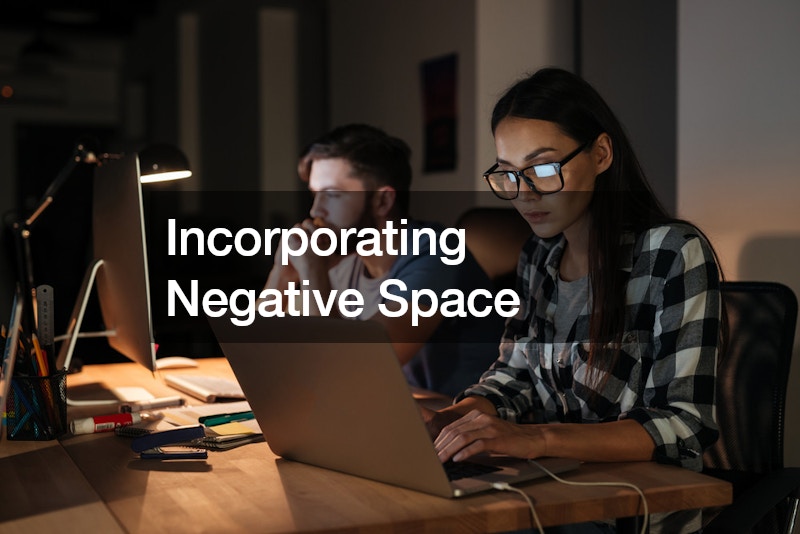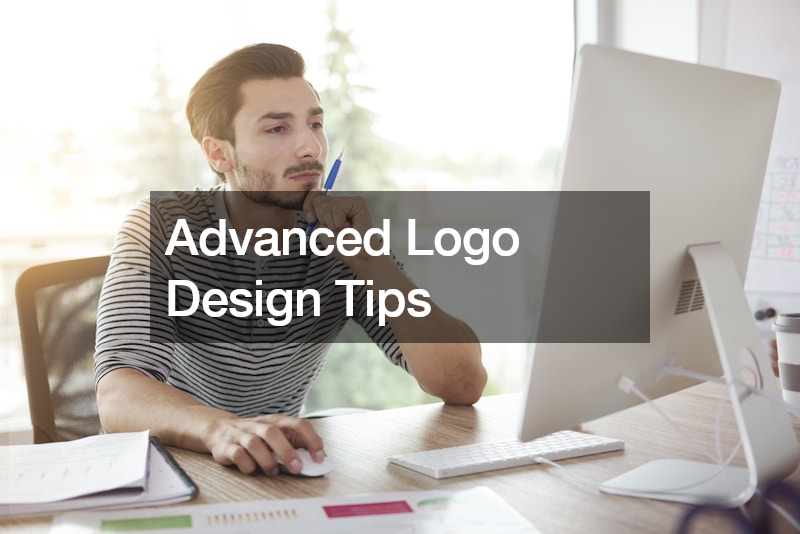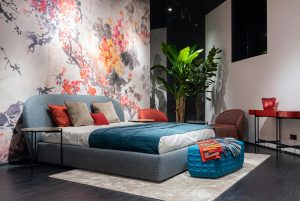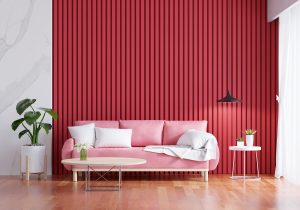Creating a compelling and memorable logo is a crucial aspect of establishing a strong brand identity. Advanced logo design goes beyond basic aesthetics, incorporating elements that resonate with the target audience and effectively communicate the brand’s values. A logo is often the first impression potential customers have of a business, and it plays a significant role in shaping their perception. Therefore, it’s essential to approach logo design with a strategic mindset, considering various design principles and techniques.
Advanced logo design involves understanding and applying concepts like color psychology, negative space, typography, and scalability, among others. Each element contributes to the overall effectiveness of the logo, ensuring it is not only visually appealing but also functional across different mediums and contexts. Furthermore, a well-designed logo can significantly enhance brand recognition, convey professionalism, and differentiate a business from its competitors. In this blog, we will explore several advanced logo design tips to help you create a powerful and effective logo for your business.
Understanding Color Psychology
Understanding color psychology is essential for advanced logo design. Colors evoke emotions and can influence how a brand is perceived. For instance, blue often conveys trust and professionalism, while red can evoke excitement and urgency. Green is commonly associated with nature and tranquility, whereas yellow can represent optimism and energy. By strategically choosing colors that align with the brand’s message and target audience, designers can create logos that leave a lasting impression. It’s important to consider the psychological impact of colors and how they work together to form a cohesive visual identity.
For an HVAC service, understanding color psychology can help in selecting colors that convey reliability and expertise. Using shades of blue and gray in the logo can communicate a sense of trustworthiness and professionalism, which are crucial qualities for a service-oriented business. Blue can evoke a feeling of calm and dependability, which is ideal for a business that clients rely on for comfort and safety. The right color palette can also make the logo more visually appealing and memorable to potential customers. Additionally, incorporating a touch of green can subtly emphasize energy efficiency and environmental consciousness, aligning with modern consumer values. By incorporating these principles, the HVAC service can create an advanced logo that effectively represents its brand and resonates with its target audience.
Incorporating Negative Space

Incorporating negative space is a sophisticated technique in advanced logo design that can add depth and creativity to a logo. Negative space refers to the empty areas around and within the design elements, which can be used to create hidden images or subtle messages. This technique can make a logo more visually interesting and memorable, as it encourages viewers to engage with the design and discover the hidden details. Effective use of negative space requires a careful balance between simplicity and complexity, ensuring that the logo remains clear and impactful without becoming cluttered.
For an artificial grass company, incorporating negative space in the logo can highlight the company’s innovative and eco-friendly approach. By using the negative space to create subtle images of grass blades or natural elements within the logo, the design can convey the company’s focus on sustainability and quality. For instance, the negative space between letters or shapes could form the outline of grass, leaves, or even a tree, symbolizing the natural, lush look of their products. This clever use of negative space not only enhances the visual appeal of the logo but also communicates key aspects of the brand’s identity. Furthermore, a well-executed negative space design can differentiate the company from competitors, making the logo more memorable to potential customers. By mastering this technique, the artificial grass company can create an advanced logo that stands out in a competitive market and effectively communicates its values.
Choosing the Right Typography
Choosing the right typography is a critical aspect of advanced logo design. Typography plays a significant role in conveying the personality and tone of a brand. Different typefaces can evoke different emotions and impressions; for instance, serif fonts often suggest tradition and reliability, while sans-serif fonts can communicate modernity and simplicity. The choice of typography should align with the brand’s identity and be legible across various sizes and mediums.
For a tree removal service, selecting the appropriate typography can help convey professionalism and expertise. A sturdy, bold sans-serif font can communicate strength and reliability, essential qualities for a business that deals with the removal of large and potentially hazardous trees. Additionally, incorporating subtle, nature-inspired elements into the typography, such as leaf-like accents on letters, can enhance the visual connection to the service provided. Ensuring the typography is clean and easily readable from a distance is also crucial, as the logo will be displayed on vehicles, uniforms, and promotional materials. By carefully choosing and customizing the typography, the tree removal service can create an advanced logo that reflects its brand values and stands out to potential clients.
Creating Scalable Designs

Creating scalable designs is an essential consideration in advanced logo design. A scalable logo maintains its clarity and impact regardless of size, ensuring it looks good on everything from business cards to billboards. This involves designing with vector graphics, which can be resized without loss of quality. Ensuring that all elements of the logo, including text and symbols, are clear and legible at both small and large scales is crucial for maintaining brand consistency across various applications.
For a commercial electrician, a scalable logo is particularly important as it will be used on a wide range of materials, from small business cards to large signage on service vehicles and buildings. The logo should be simple enough to remain clear when scaled down but detailed enough to convey professionalism and expertise when viewed up close. Using clean lines and distinct shapes can help maintain the logo’s integrity at any size. Additionally, testing the logo at different scales before finalizing the design can ensure that it remains effective and recognizable in all contexts. By prioritizing scalability in the design process, the commercial electrician can create an advanced logo that consistently represents the brand across various platforms and mediums.
Balancing Simplicity and Complexity
Balancing simplicity and complexity is a key principle in advanced logo design. A simple logo is often more memorable and versatile, but adding a touch of complexity can make it unique and intriguing. The challenge lies in finding the right balance where the logo is neither too plain nor overly complicated. This balance ensures that the logo is easy to recognize and recall while still conveying the brand’s unique identity and values.
For an auto repair shop, achieving the right balance between simplicity and complexity can help create a logo that stands out in a crowded market. A simple design, such as a wrench or tire, can be instantly recognizable and easy to remember. Adding a layer of complexity, such as incorporating the outline of a car within the logo or using negative space to form related tools, can make the logo more distinctive and engaging. This approach ensures the logo remains versatile for use on signage, uniforms, and promotional materials while still capturing the attention of potential customers. By expertly balancing simplicity and complexity, the auto repair shop can create an advanced logo that effectively communicates its expertise and reliability.
Using Grid Systems

Using grid systems is an advanced technique in logo design that ensures consistency, balance, and alignment in the logo’s composition. A grid system provides a structured framework that guides the placement of elements, helping designers achieve precise proportions and a harmonious layout. By adhering to a grid, designers can create logos that are visually appealing and well-organized, enhancing their overall effectiveness and professionalism.
For a divorce attorney, using a grid system can result in a logo that conveys stability and order, which are important attributes in the legal field. The grid can help in aligning text with symbols, ensuring that the logo looks balanced and cohesive. For example, the grid can guide the placement of scales of justice or other legal symbols alongside the firm’s name, creating a visually appealing and professional logo. This structured approach can make the logo more memorable and trustworthy, appealing to potential clients who are seeking reliable legal services. By utilizing a grid system, the divorce attorney can create an advanced logo that reflects the firm’s professionalism and attention to detail.
Implementing Visual Hierarchy
Implementing visual hierarchy in logo design involves arranging elements in a way that guides the viewer’s eye and emphasizes the most important aspects of the logo. This technique helps to create a clear and effective communication of the brand’s message. By using size, color, contrast, and positioning strategically, designers can ensure that the key elements of the logo stand out and are easily recognizable.
For a local roofing contractor, implementing a visual hierarchy can help highlight the company’s name and core service. The company name can be the largest and most prominent element, while supporting graphics, such as a roof icon or a tagline, are smaller and secondary. Using contrasting colors for the main elements can draw attention and make the logo more impactful. For instance, a bold, dark color for the company name and a lighter shade for the supporting elements can create a strong visual hierarchy. This approach ensures that the essential information is communicated effectively, making the logo memorable and professional. By implementing visual hierarchy, the local roofing contractor can create an advanced logo that captures attention and clearly conveys its services.
Designing for Versatility

Designing for versatility is crucial in advanced logo design to ensure that the logo works well across various mediums and applications. A versatile logo maintains its integrity and visual appeal whether it’s printed in full color, used in a single color, or displayed in a small size. This flexibility is essential for maintaining brand consistency and ensuring the logo looks good on different platforms, from business cards to digital screens.
For a local computer repair service, designing a versatile logo means creating a design that looks great whether it’s on a website, social media profile, or printed materials. The logo should be simple enough to be recognizable at a small size yet detailed enough to convey the company’s expertise and professionalism. For example, a clean and modern icon representing computer technology paired with the company name in a clear, legible font can work well in various contexts. The logo should also be designed to look good in both color and monochrome versions to ensure it can be used in different printing scenarios. By focusing on versatility, the local computer repair service can create an advanced logo that effectively represents the brand across all mediums and maintains its impact.
Integrating Brand Values
Integrating brand values into logo design is an essential aspect of creating a logo that resonates with your target audience and reflects your company’s core principles. A logo should not only be visually appealing but also convey the essence of what your brand stands for. This can be achieved by incorporating elements that symbolize your brand’s values, such as colors, shapes, and icons that represent your mission and vision.
For a caterer, integrating brand values into the logo design can emphasize quality, creativity, and attention to detail. For example, the logo could include a sophisticated icon of a cloche or a chef’s hat, combined with elegant typography to convey professionalism and culinary excellence. The use of colors like gold and deep green can evoke a sense of luxury and fresh, high-quality ingredients. By incorporating these elements, the caterer can create an advanced logo that not only looks appealing but also communicates the brand’s commitment to exceptional service and delicious cuisine, resonating with clients who value these qualities.
Testing Across Mediums
Testing across mediums is a critical step in advanced logo design to ensure that the logo maintains its effectiveness and visual appeal in different formats and contexts. A logo must be adaptable and look good on various platforms, including digital screens, print materials, merchandise, and signage. This process involves checking how the logo performs in different sizes, color schemes, and backgrounds to guarantee its versatility and consistency.
For a local exterminator, testing the logo across mediums can ensure that it remains clear and recognizable on business cards, vehicle wraps, uniforms, and digital ads. The logo should be tested in both full-color and monochrome versions to ensure it remains impactful and legible. For instance, the logo might include an icon of a shield to represent protection and safety, paired with bold, clean typography. By testing the logo in various applications, the local exterminator can ensure it consistently conveys the brand’s message of reliability and effectiveness, helping to build trust with customers across all touchpoints.
In conclusion, creating an advanced logo involves a strategic approach that incorporates various design principles and techniques. Understanding color psychology, incorporating negative space, choosing the right typography, and ensuring scalability are just a few of the critical elements that can elevate your logo design. By balancing simplicity and complexity, using grid systems, implementing visual hierarchy, and designing for versatility, you can create a logo that is not only visually appealing but also highly functional across different mediums.
Additionally, integrating brand values and testing the logo across various applications ensures that it effectively communicates your brand’s identity and resonates with your target audience. Whether you are a local computer repair service, a caterer, or any other business, these advanced logo design tips can help you create a powerful and memorable logo that stands out in a competitive market. By focusing on these key aspects, you can develop a logo that not only enhances your brand’s visibility but also reinforces its core values and message, setting the stage for long-term success.





